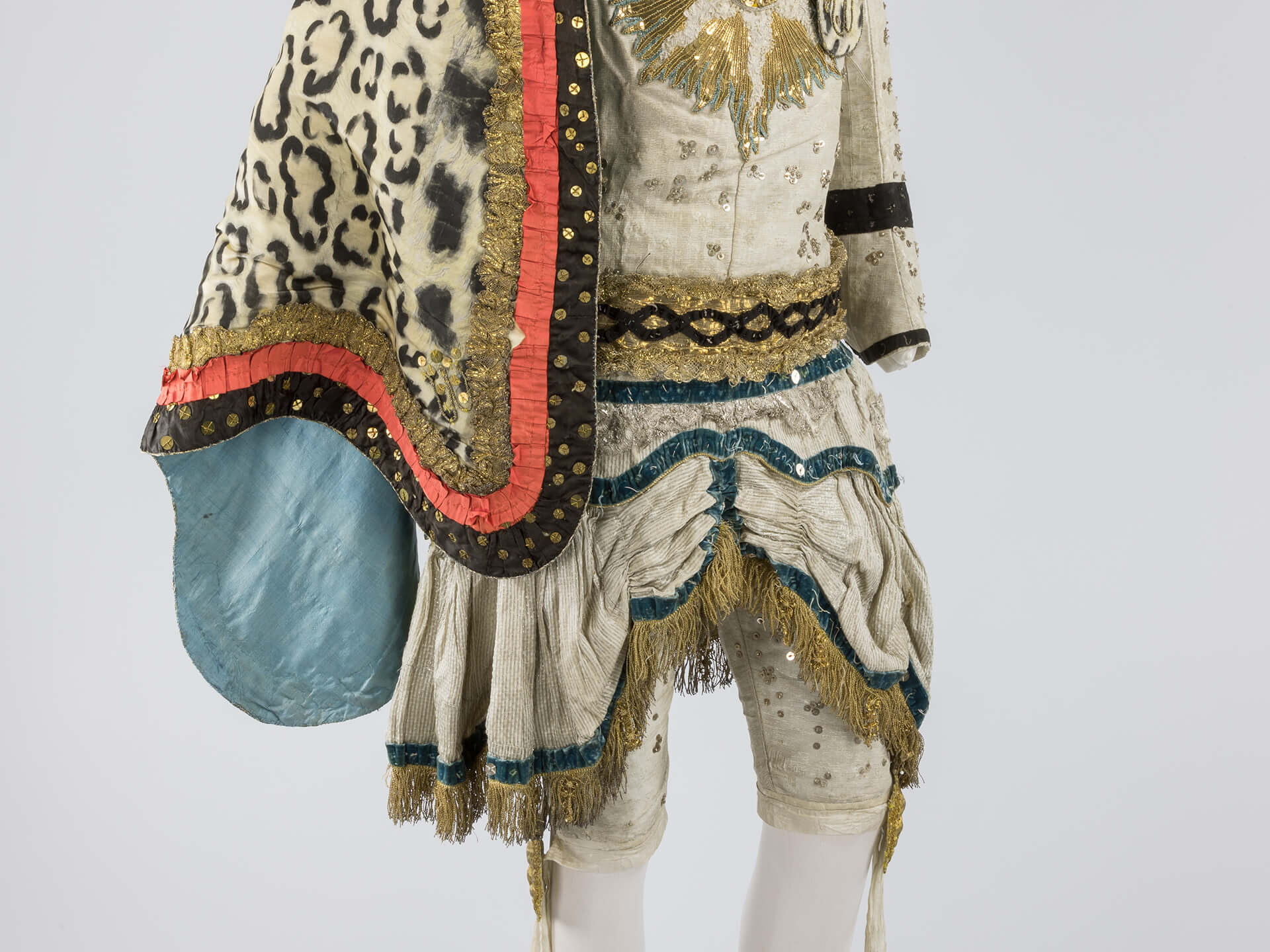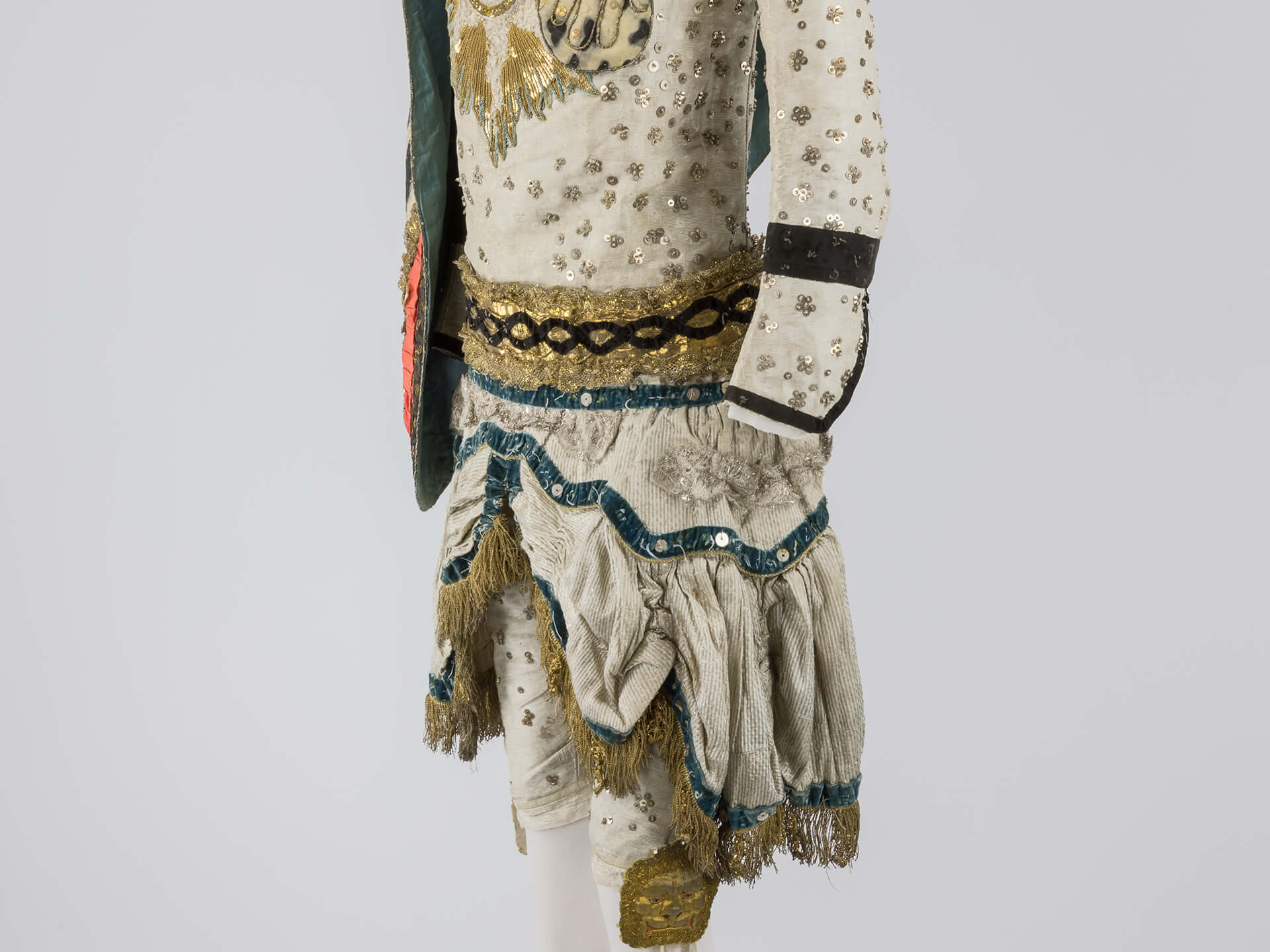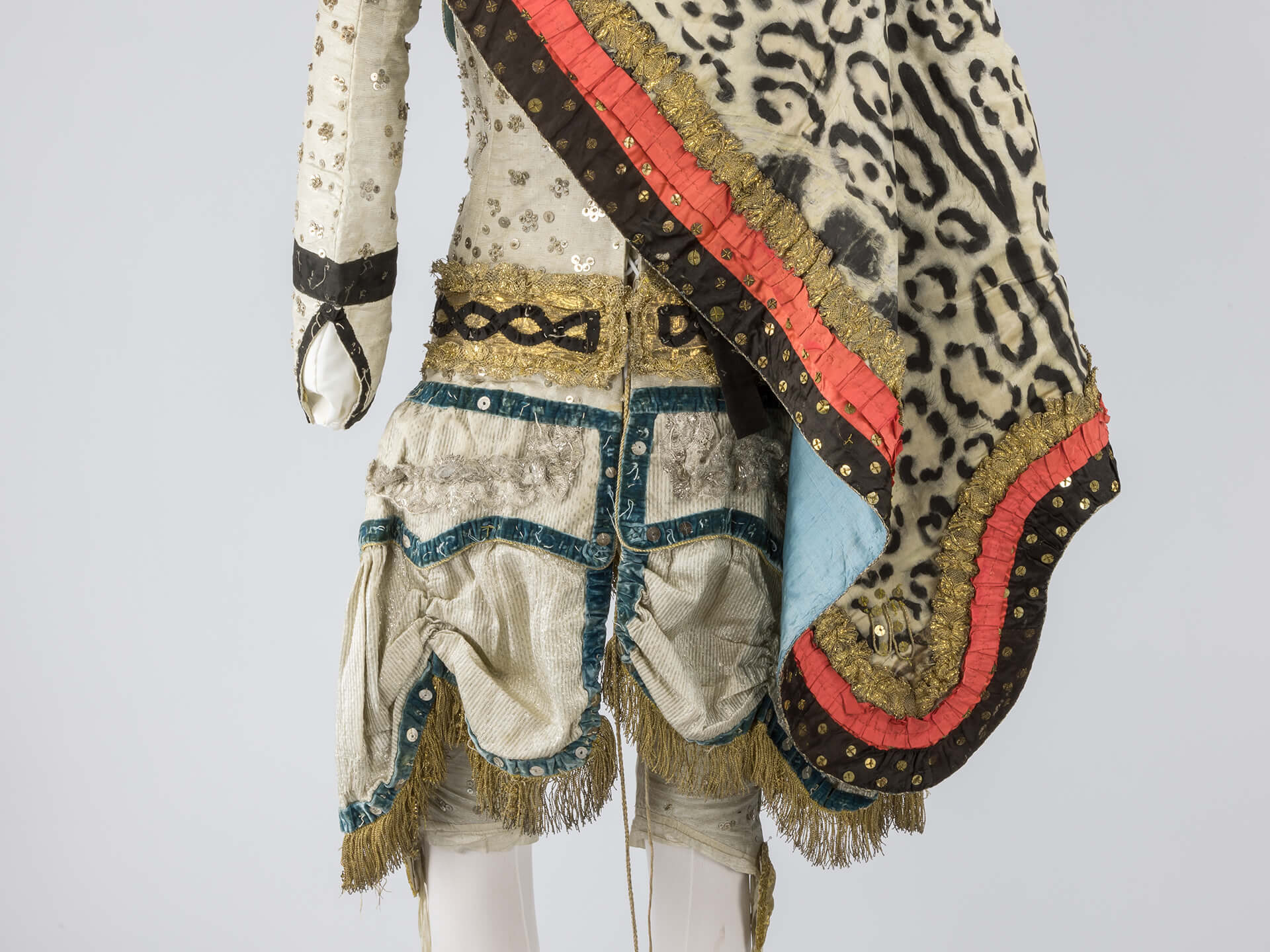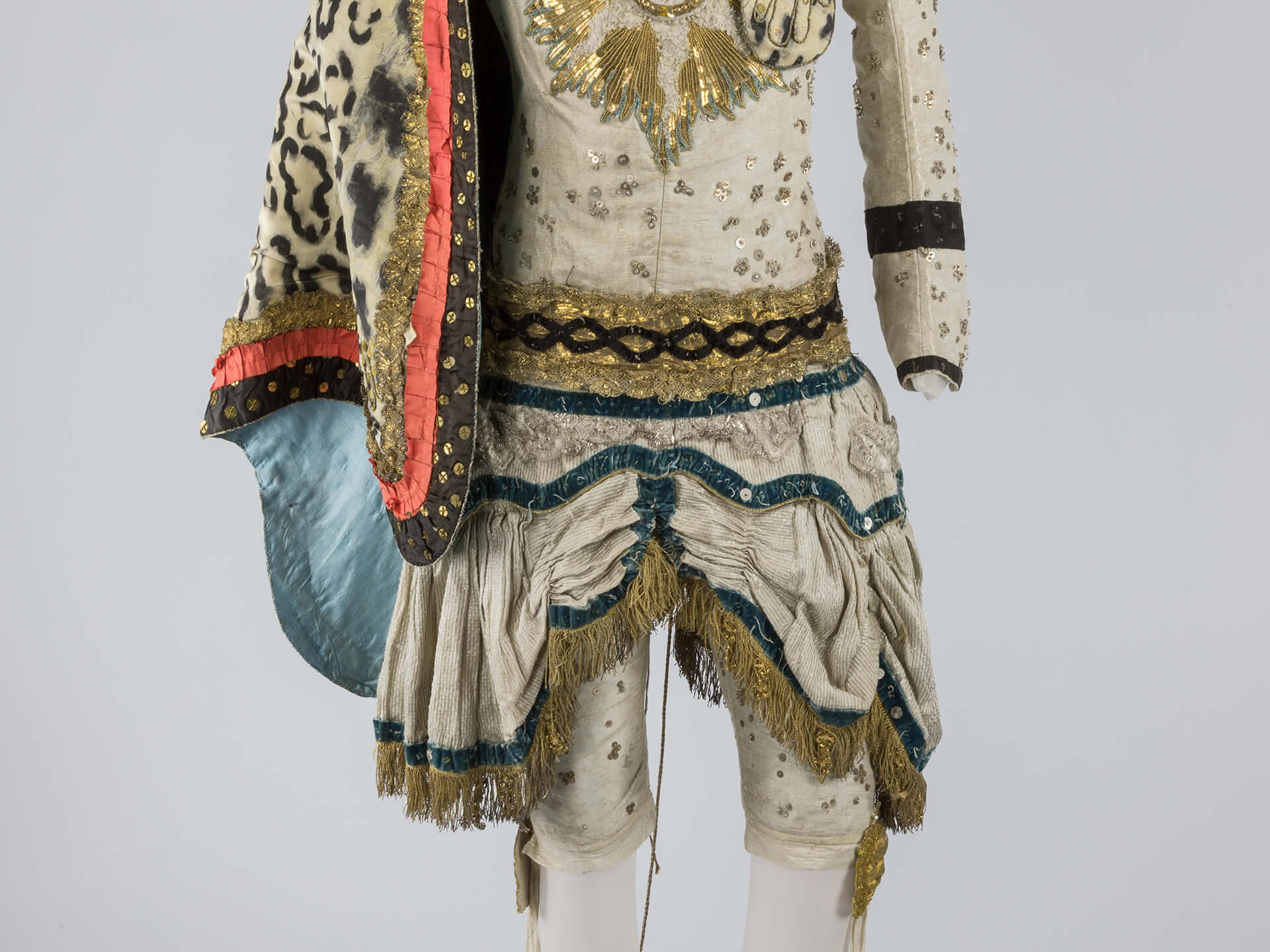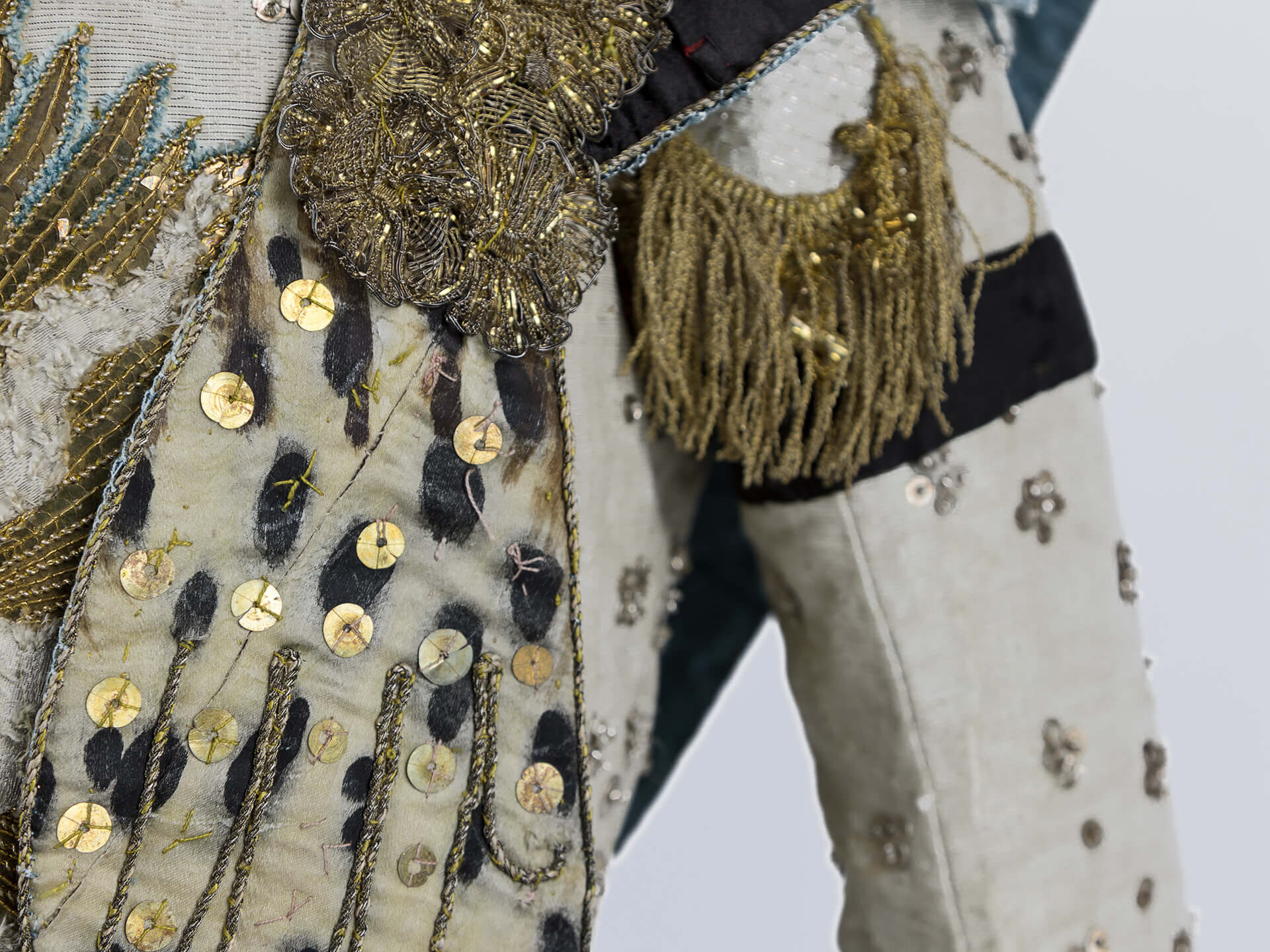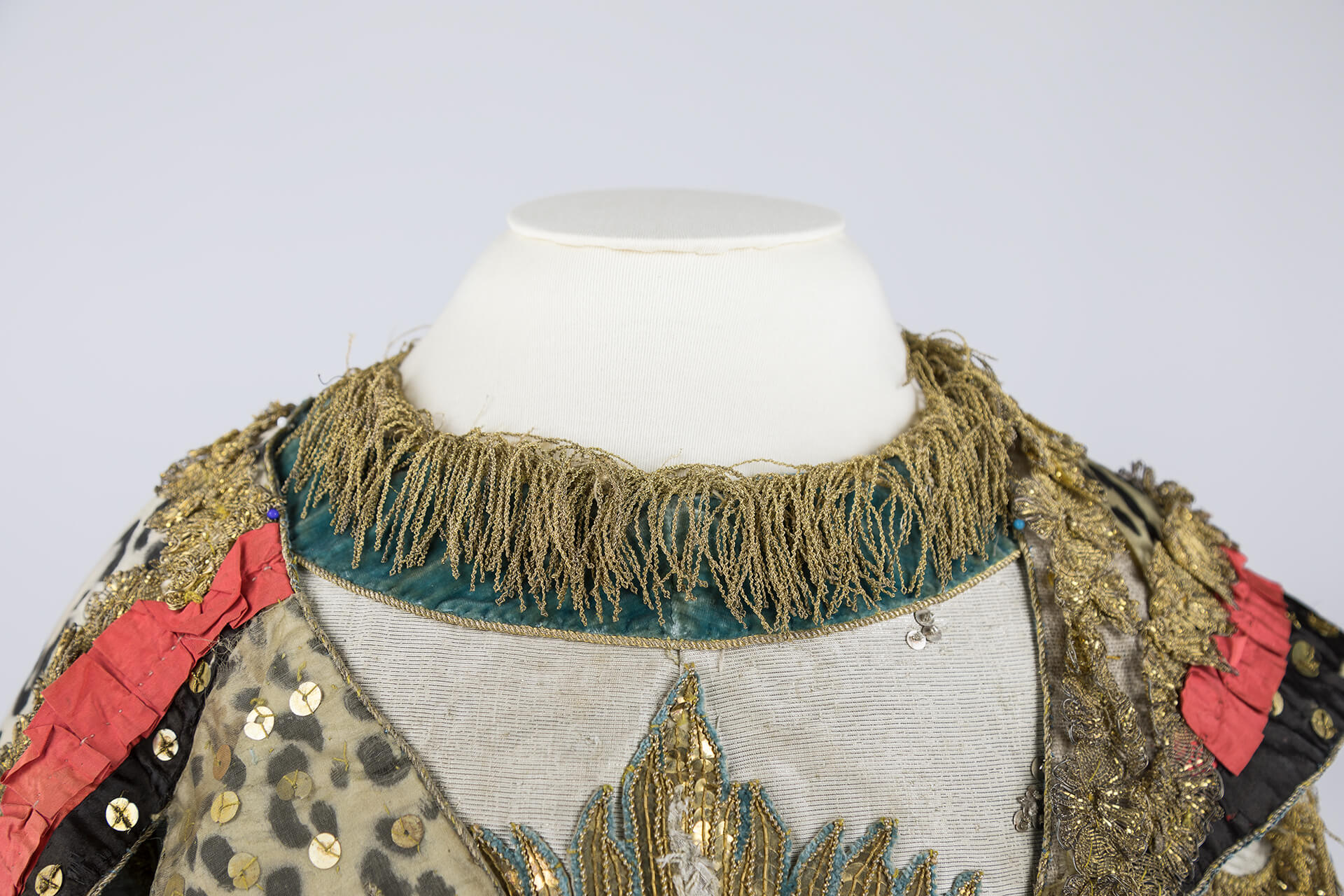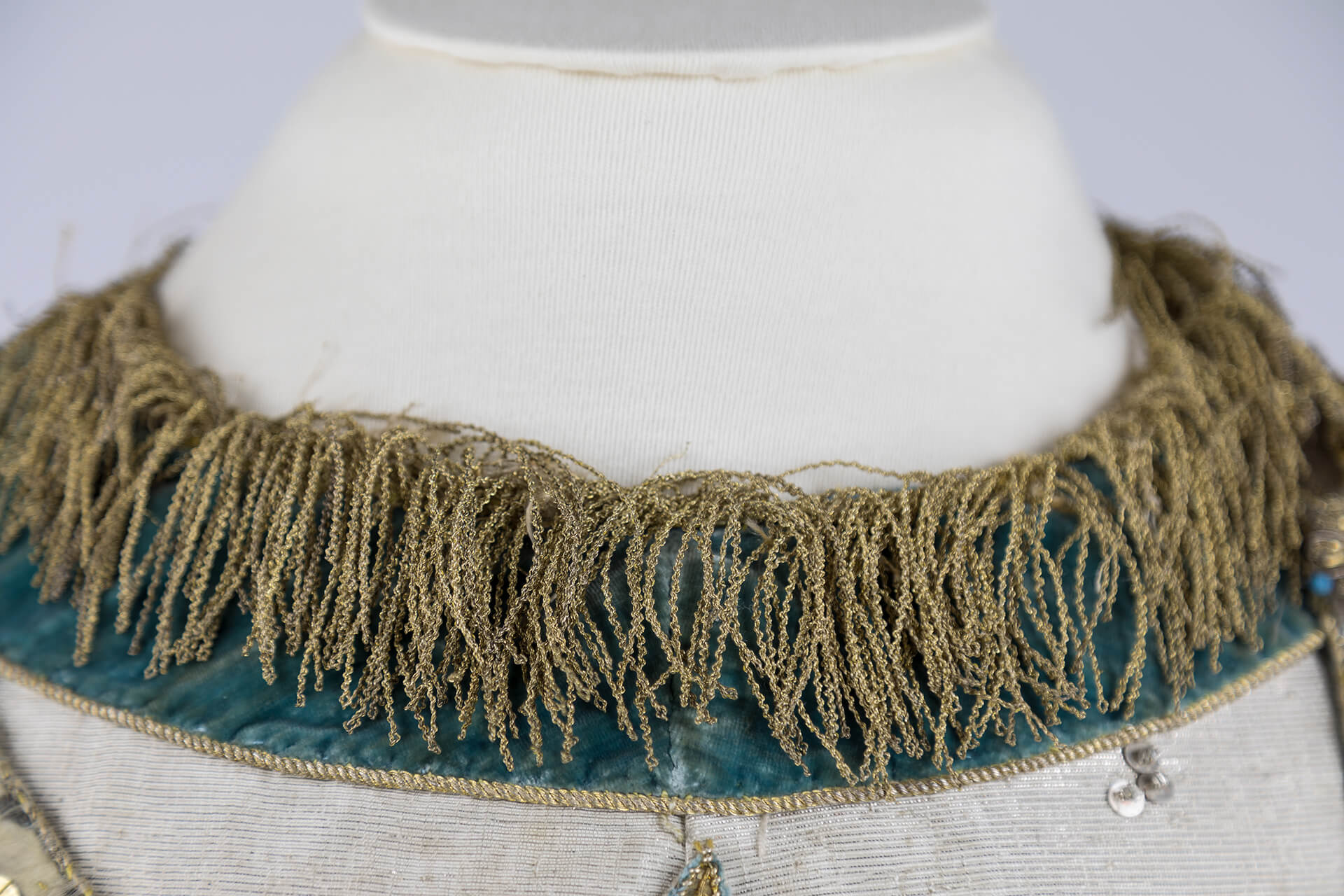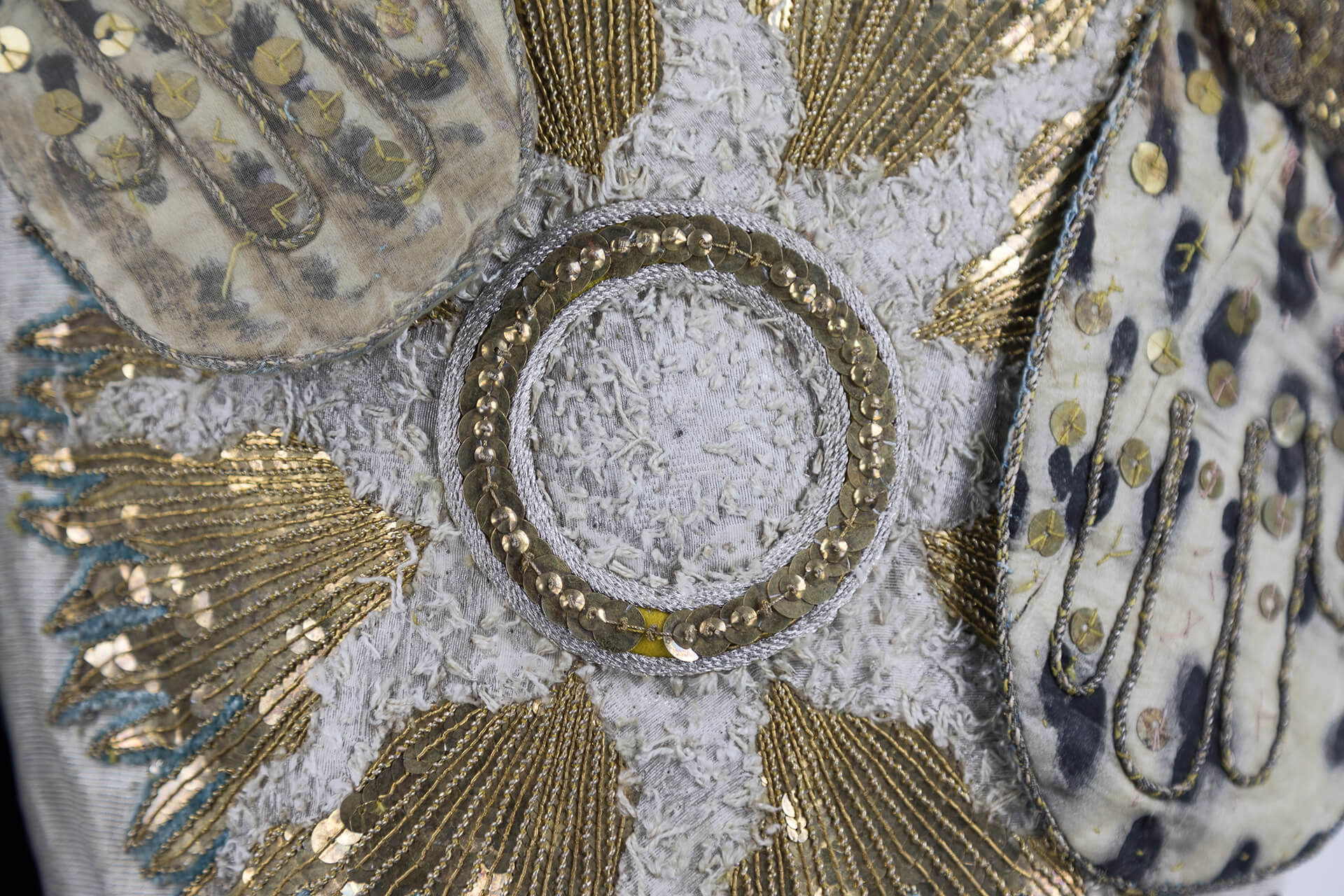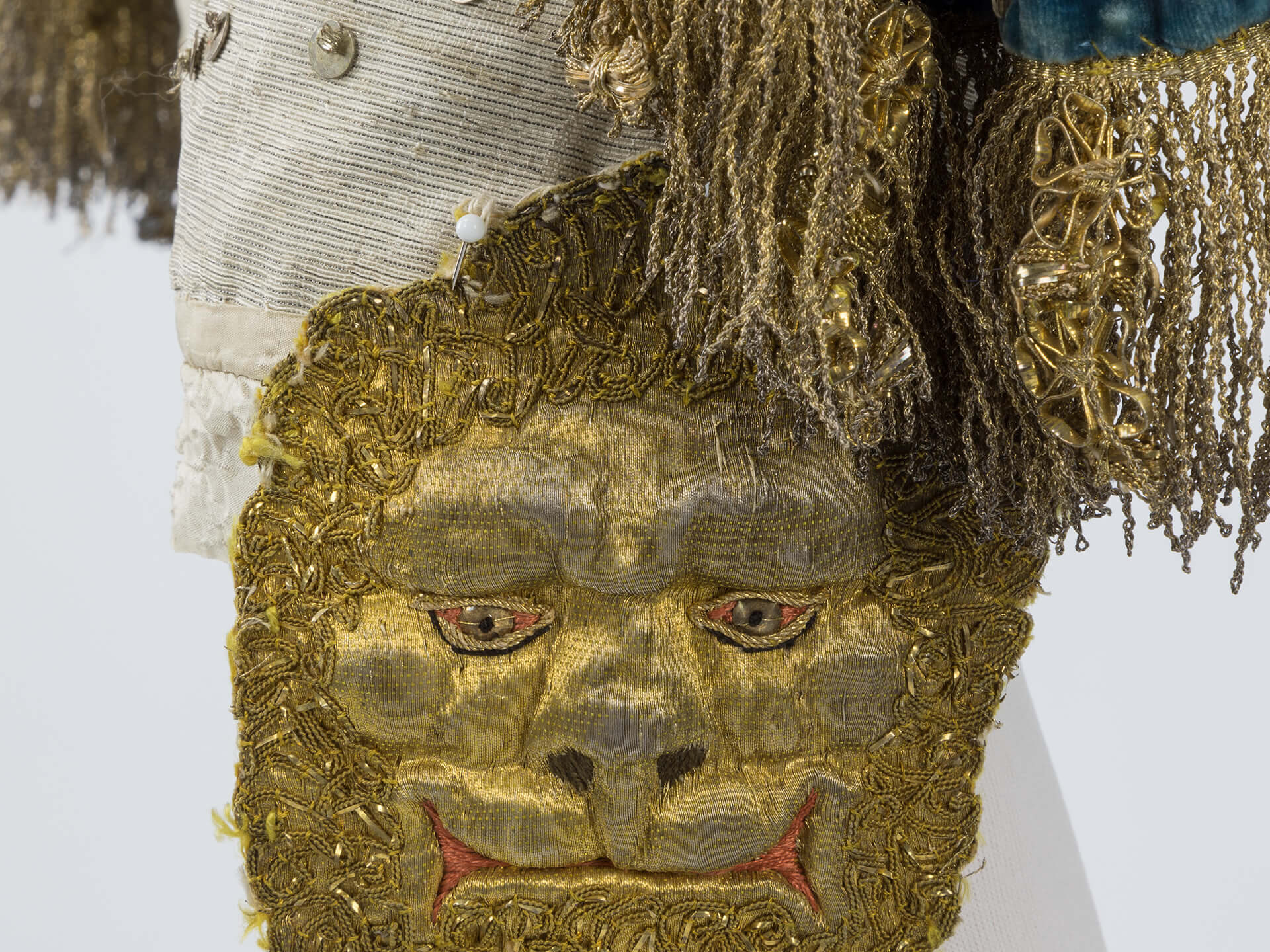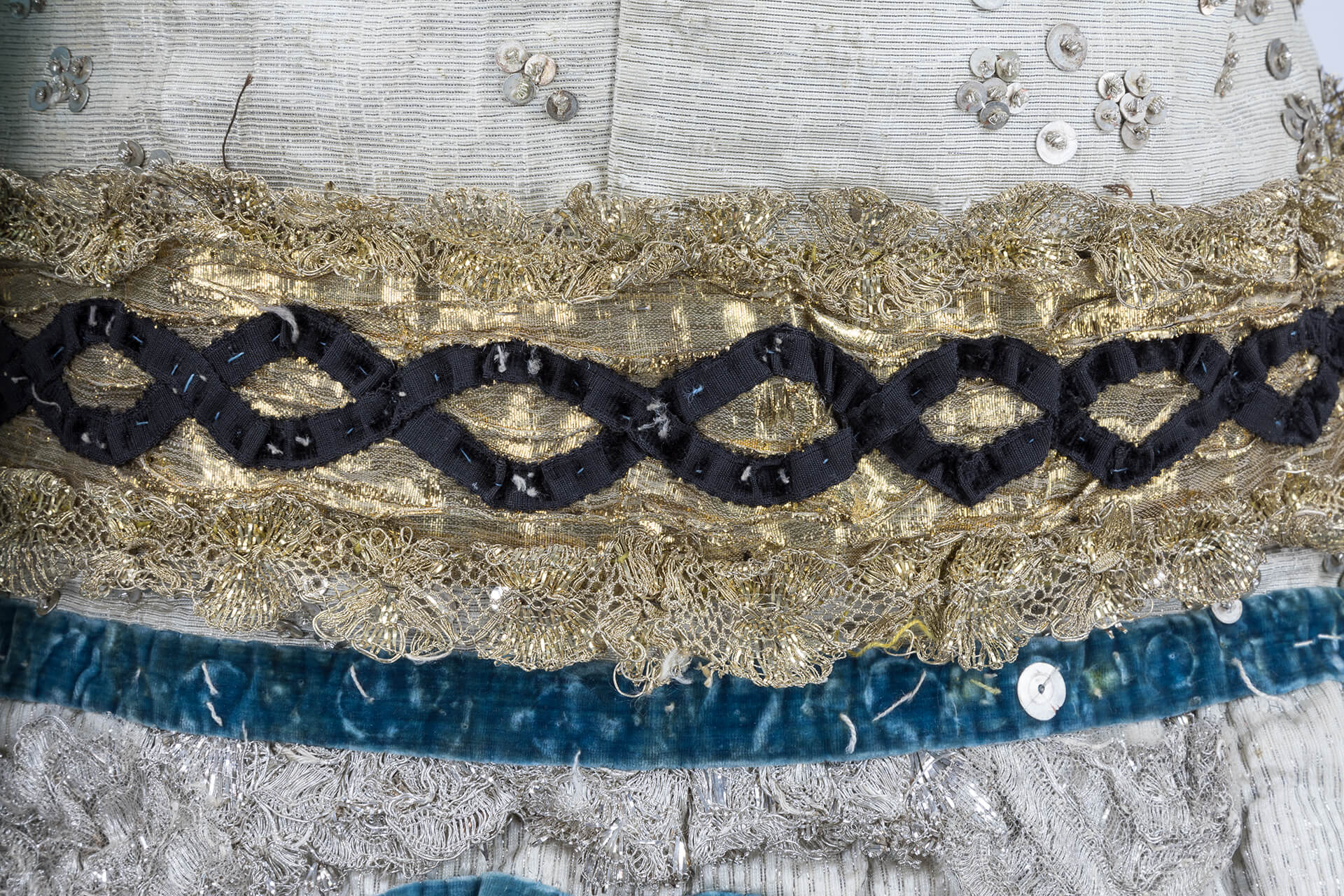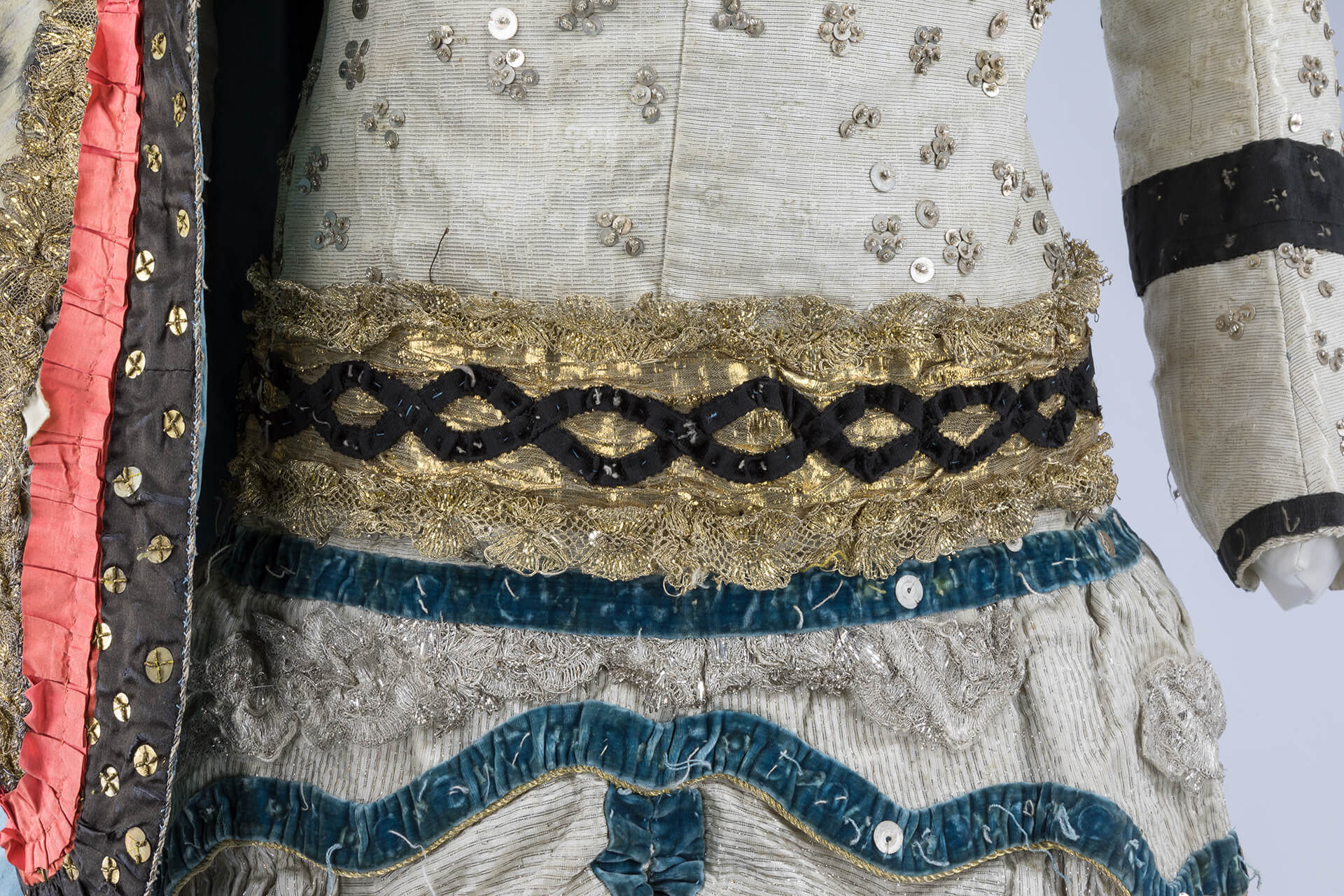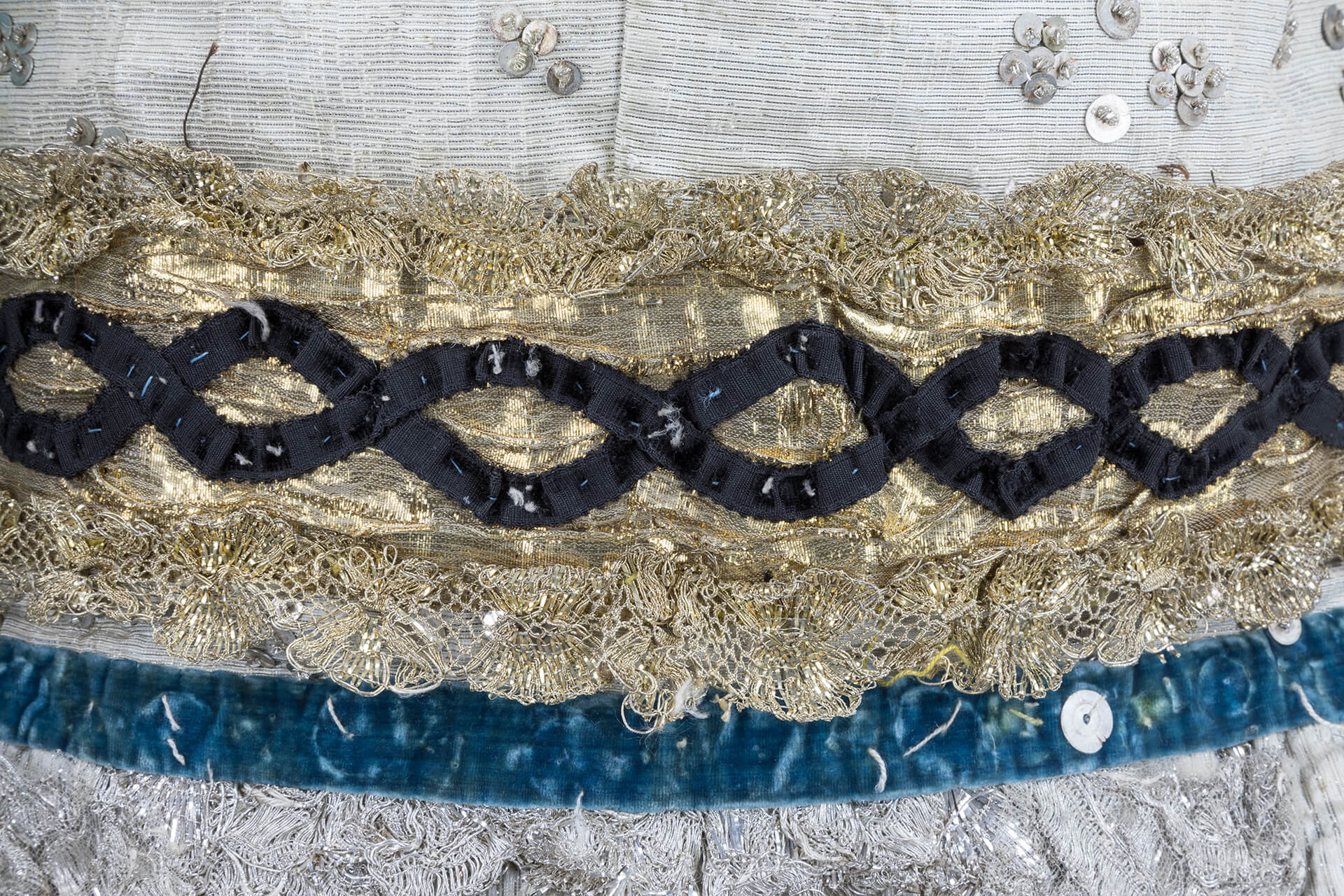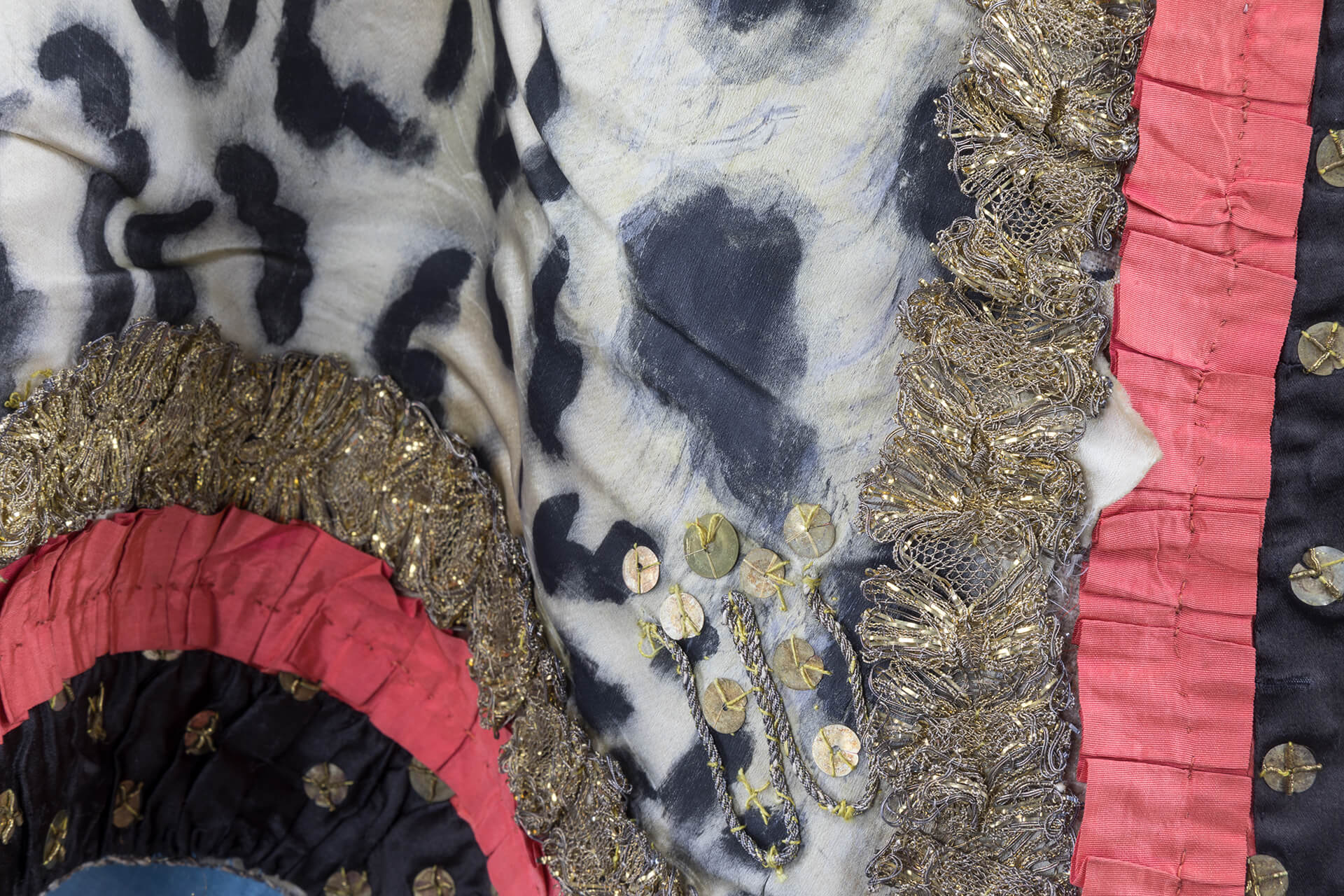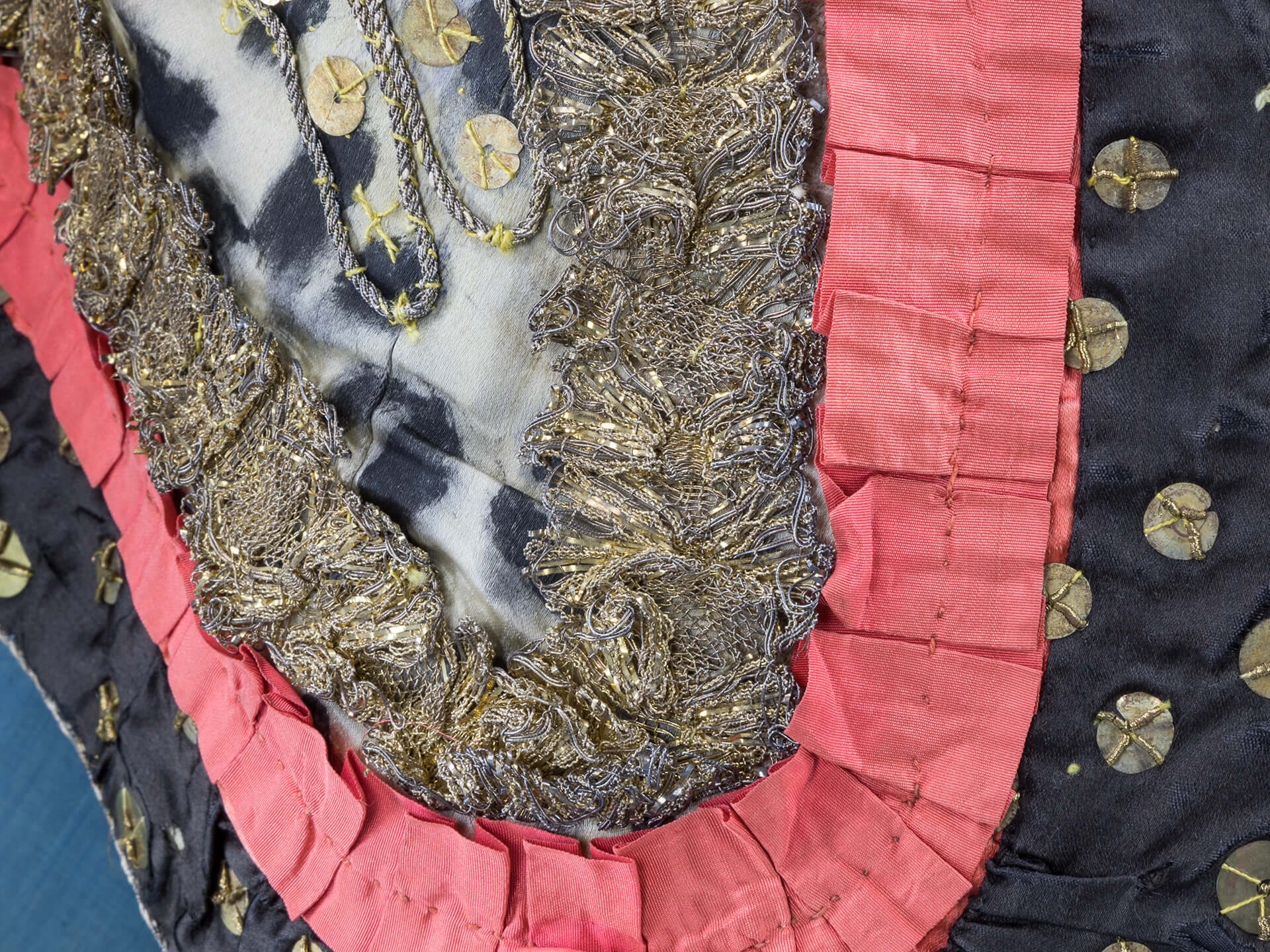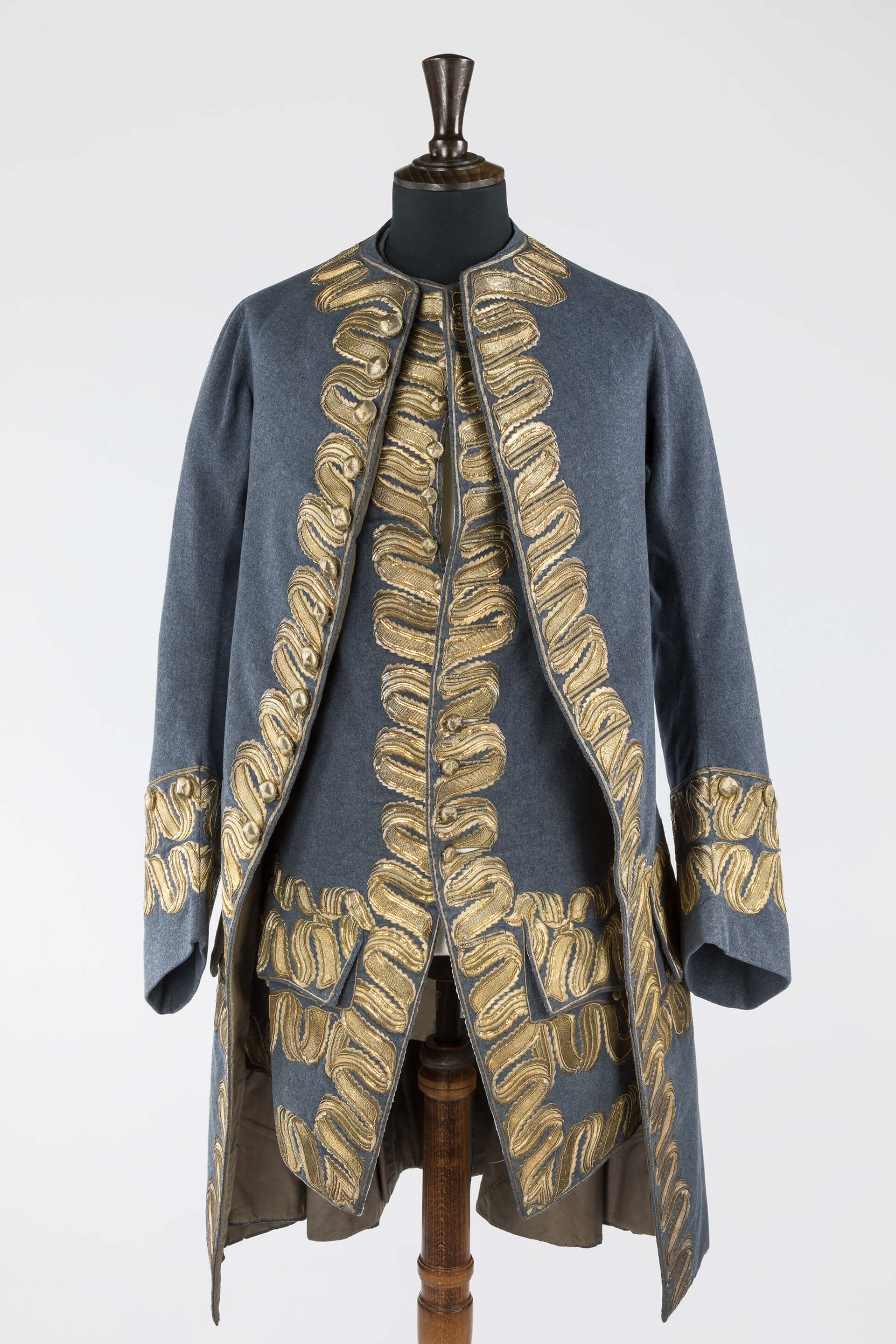Carousel tunic, breeches, cloak, and lion masks
Description
Fancy dress costume worn by Patrick Home at the Carousel held at the court of King Frederick the Great of Prussia in August 1750.
The Carousel held in Berlin, 1750, was one of last great European Royal performances designed to demonstrate the power, wealth, and importance of the King and his cavalry to his subjects and other kingdoms.
King Frederick II of Prussia, named Frederick the Great, held a month of festivities to celebrate the visit of his elder sister, Wilhelmine, in August 1750. Balls, concerts, opera, plays, feasts, and firework displays culminated in knightly equestrian performances where four teams competed. The events took months of preparation and rehearsals. Thousands of people watched the spectacle. Four teams based on ancient empires (the Greeks, Romans, Persians, and Carthaginians) were each led by a Prince or military figurehead with six knights, plus pages and squires.
Patrick Home, then aged 22, who later built Paxton House, was a knight in the Carthaginians team. Each team displayed their horsemanship through arranged performances to music; tilting, jousting, and various types of target practice also took place. The spectacular displays took place in an illuminated performance on the evening of 25th August and during the day of 27th August 1750.
The paintings recording the Carousel (now in the National Museum of Sweden), appear to show the presence of Black people involved in the performances as riders, musicians, archers, and performers. It is difficult to know for sure how many people involved in the Carousel were of African origin or descent. The Carthaginian team represented the Prussian idea of the North African Carthaginian Empire (814-146 BC). Patrick’s matching horse regalia is also in Paxton’s collection. This is the only costume surviving from the Carousel event.
